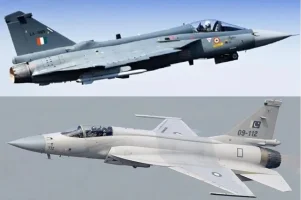- Views: 4K
- Replies: 44

In a recent interview with Suno Digital, former Commodore Sajid Mehmood Shehzad HI(M) of the Pakistani Navy outlined the nation's strategic approach to submarine warfare and nuclear deterrence.
Shehzad stated that Pakistan has no intention of developing nuclear-powered submarines, believing that conventional submarines equipped with tactical nuclear weapons provide an equally effective deterrent.
This strategy centers around the Babur cruise missile, a submarine-launched weapon capable of carrying a nuclear warhead. By deploying these missiles on its existing fleet of conventionally powered submarines, Pakistan aims to maintain a credible nuclear deterrent without the significant financial and technological burden associated with developing and maintaining nuclear-powered submarines.
Shehzad also took the opportunity to criticize India's pursuit of a nuclear submarine fleet, deeming it an unnecessary expenditure in light of the country's widespread poverty.
He further argued that India's lack of global naval bases limits the operational range of its submarine fleet, rendering the investment strategically questionable.
This statement offers insight into Pakistan's naval doctrine, which prioritizes cost-effective solutions to maintain a credible nuclear deterrent against its regional rival.
While Pakistan currently operates conventionally powered attack submarines, including the French Agosta and the newer Chinese Hangor-class, it has consistently emphasized the development of its nuclear-capable missile systems as a cornerstone of its defense strategy.



